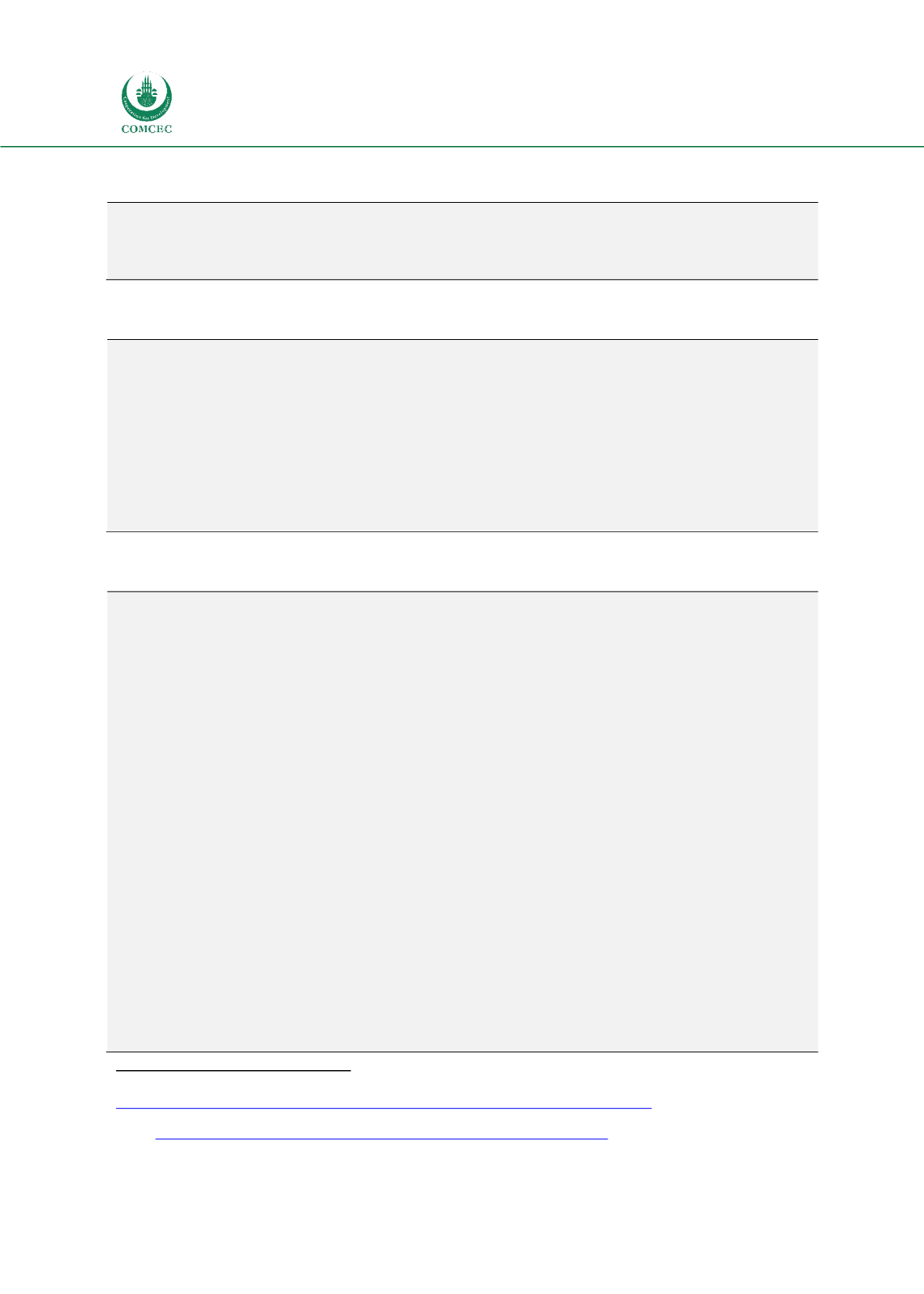

Improving the Border Agency Cooperation
Among the OIC Member States for Facilitating Trade
62
BAC in Iran: Information exchange
Iran and Armenia have recently launched a new initiative on border agency cooperation. The new
initiative facilitates exchange of information regarding private vehicle traffic across the Iranian-
Armenian border. This project builds on the previous Iranian efforts to modernise the customs
clearance process by employing modern information and communication technology.
94
BAC in Kazakhstan: Taking benefit of regional cooperation
Border Agency Cooperation efforts in Kazakhstan build on the cooperation among the Eurasian
Customs Union, a single market alliance between five former Soviet states: Armenia, Belarus,
Kazakhstan, Kyrgyzstan and Russia.
95
The same way as the EU Customs Union, the Eurasian
Customs Union seeks to strengthen the Eurasian single market by removing barriers for free
regional movement of goods, services, capital and people. Operational since 2015, the Eurasian
Customs Union imposes a common external tariff on goods from third countries. There are no
customs posts between the members of the Union, and the members have agreed on common rules
regarding sanitary and phytosanitary standards for food and agricultural products. The recent
economic downturn, however, has slowed down the pace of integration and trade facilitation in the
Union.
96
BAC in Kyrgyz Republic: Modernisation improving the efficiency
Kyrgyzstan is harmonising its customs operations with its neighbour Tajikistan. The regional
harmonisation efforts build on two main development areas: 1) modernisation of information
systems and 2) increasing efficiency of border crossing posts. Training and awareness building
support the adoption of the new technologies and associated operating principles, customs officers
commonly receiving training on computer skills, system maintenance and computer-aided risk
management. In the adoption process, the Kyrgyzstan customs consults businesses to ensure the
buy-in of the private sector to the new customs operations and practices
The modernisation of the information systems includes the introduction of a unified automated
information system, an application for managing customs procedures among the border service,
customs, health, transport, and agriculture, the five main border control agencies in Kyrgyzstan.
The system features satellite-based communications – at 37 border-crossings – that enable regional
customs offices to communicate with the headquarters and local border posts in real time. Three
border crossings are equipped with power generators and modern inspections equipment.
Increasing efficiency at the border posts involves investments in infrastructure, inspection
equipment (and power generators and inverters in remote sites) and extensive training of border
control officers on new border control practices. The new customs ICT system is capable of
automatically assessing risk levels of cross-border movements and guiding inspection activities at
the border.
The entire modernisation program is supported by a legislative reform: the Kyrgyzstan customs
advocates eight major legal changes that are designed to streamline foreign trade-related
administrative procedures and customs controls. Besides the legal reform, also the overall
organisational structure of the customs administration is subject to change.
94
Armenian Customs, 2015. Armenian-Iranian cooperation expanded.
www.customs.am/csMD_News.aspx?ntname=csIRInterNews&nid=2007 (accessed 7 April 2016)
95
Ministry of Foreign Affairs Republic of Kazakhstan, 2014. Customs Union, Single Economic Space and Eurasian Economic
Union
. www.mfa.kz/index.php/en/foreign-policy/integration-processes/customs-union (accessed 2 May 2016)
96
Tarr, 2015.
















